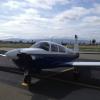Where is your ELT antenna mounted?
-
Members Online
- WilliamR
- PilotX
- amillet
- MarkD34M
- good2eat
- Niko182
- A64Pilot
- DXB
- Peter T
- acekng1
- 00-Negative
- Daily
- redbaron1982
- Old Chub
- TaildraggerPilot
- TCC
- pwnel
- Hank
- DanM20C
- filiperosa
- Oldguy
- gabez
- 231DF
- ElkoRandy20J
- Gilt
- Marc_B
- Jim F
- N201MKTurbo
- Mellow_Mooney
- ProtoFly
- Danb
- pkellercfii
- DSP MARAM
- BillyT0020
- 47U
- eman1200
- ericrynehess
- 201Mooniac
- Aaviationist


Recommended Posts
Join the conversation
You can post now and register later. If you have an account, sign in now to post with your account.